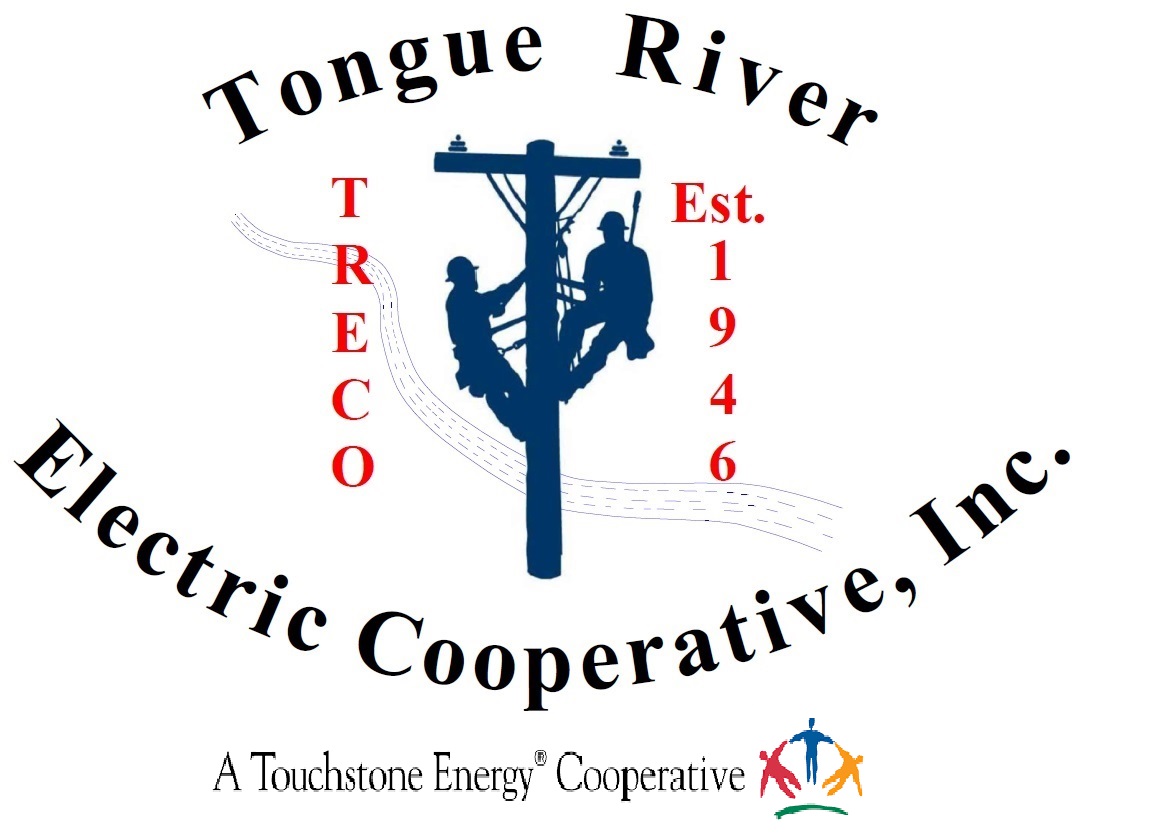Tongue River Electric Coopertive, Inc was Incorporated January 22, 1946, by Orval W. Gentry, P.T. Bennet, Edward M. Hanson, Julian Terrett, Stephen B. Smith, Perry Hanson, W.C. Wiechman, & F. L. Kamhoot. These men were the original Board Members as well. TRECO services were first energized on September 9, 1949. Currently, TRECO serves 2,630 members with a history of over 4,966 members served.
Tongue River Electric Cooperative History
Franklin D. Roosevelt signed the Rural Electrification Act as part of his stimulus plan to get us out of the great depression of the 30's. The Act provided low interest 35 year loans. It was hoped that the electric power companies serving the cities and small towns of America would take advantage of these 2% loans and begin to extend their lines to rural America. This did not happen or at least not fast enough to satisfy the people out in the country and as a result, the electric cooperatives that we take for granted today stumbled into an uncertain existence under the supervision of the Rural Electrification Administration.
The first cooperatives in Montana developed in the denser valley areas between 1937 & 1939 and were serving customers before Pearl Harbor precipitated the US into World War II. Lack of materials and other problems put the development of new cooperatives on hold until the end of the conflict in Japan in 1945. But in 1946 people in the thinly populated dry lands began to stir and looked first to the already established valley coops to extend their lines into new areas but to most valley boards that looked like a losing proposition for their members and it did not happen.
Tongue River Electric came into being when ordinary folks with an extraordinary vision one of which was Orville Gentry embarked on a perilous journey to determine whether the ranchers and farmers spread out over eastern Montana could create an organization that could supply electricity to them and survives with the help of REA loans and guidance.
Getting enough people signed up in an area to be served by a proposed line and show the REA that feasibility for repayment of the money to be borrowed was the challenge for a number of years. The first line to be actually energized was built in the Terry area. Other lines followed but it was a slow process. In at least one case the signers had to commit to a special surcharge before REA would commit funds.
The Bureau of Indian Affairs (BIA) had built a line from Colstrip to Lame Deer and Busby in the early 30's to serve their administrative facilities and schools but very few Indian homes were reached and the BIA was starved for funds to maintain, extend and operate their system. Negotiations were begun and resulted in the acquisition of the BIA lines and the beginning of extensive electric service to almost all areas of the reservation.
Ashland folks got their electricity from a diesel plant which stuttered from time to time and electric lines which required maintenance so those customers became part of the TRECO system. Perhaps the need of Ashland for more dependable service was part of the impetus for the founding of TRECO. Judge Jones in Broadus operated a diesel plant and distributed electricity to the businesses and homes in the village. As TRECO's lines extended toward and around Broadus, it was beginning to be apparent that TRECO might survive and Judge decided it might be time to retire from the electric business and did arrange to sell out his operation to TRECO. Those acquisitions over the years rounded out the TRECO system and made it possible to extend lines farther into rural Eastern Montana.
From time to time our members should give a moment's thought to those pioneer directors who had faith that an electric cooperative serving the thinly populated dry lands of eastern Montana could succeed. Nor should we forget the managers selected by the board to guide the day to day operations of the cooperative over the years: Orval Gentry, Eugene Morgan, A. W. Mills, James Richards, Harold Hanson, and Alan See.
